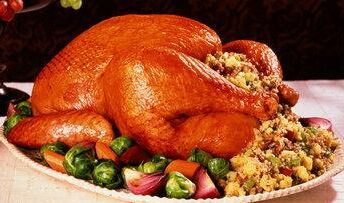When a farmer plants corn, he (yes, I know "he" is sexist, but realistically it is almost always a "he") knows that the corn is going to need a good dose of nitrogen to grow up strong and healthy. And growing up strong and healthy means big yields. For our family, big yields means we'll have grain for the livestock until the next year's harvest. Having grain for feed until the next year's harvest means we won't have to buy grain from someone else. So....its very important for us to get the nitrogen put on just right at just the right time.
Liquid nitrogen is basically like Miracle Grow for corn. It gives the corn stalk a super boost of fertilizer it needs to strengthen and prepare to make the ear of corn. While the nitrogen can be applied during any stages of early corn growth, its best to apply it as late as you can before the corn really needs it. By applying it as late as possible, you avoid having all that good (and expensive) nitrogen run off with rain. And it doesn't take a heavy rain to wash away nitrogen; just a good ol' summer storm brings with it the possibility of washing away the nitrogen from the soil and into the nearest ditch.
So then, how is it applied? Some farmers will spray their whole fields with the liquid nitrogen (which is how we use to do it). But when one does that, not only is the corn getting the nitrogen but so is the middle of the row where there is no corn. The soil in the middle of the corn rows don't need the nitrogen because its not growing anything. So, Josh and Loren spent some time and brain power to devise a system onto their cultivator that allows them to target the nitrogen right next to the corn plant. When they go through the fields with the cultivator (a piece of machinery that loosens the soil in the middle of the row, digging up weeds as it goes), the nozzles spraying the nitrogen is directed specifically at the base of the corn plant making it so that all the fertilizer is going to the corn and not the middle of the row. Hence the name "side dressing": just dressing the sides of the row containing the plants. As they go through the field, they get two jobs done in one pass: getting the weeds with the cultivator and fertilizing the corn with nitrogen. Make sense?
(By the way, the pictures below were taken with my camera that has the broken screen. I couldn't see exactly what it was I was taking a picture of, but I think they turned out well enough to explain the process.)
 |
| As delicious as it looks, this is what side dressing is NOT! |
| This is what side dressing IS! |
| An idea of how it sits on the ground. |
This may be more than you ever cared to know about side dressing. But at least you have that yummy Thanksgiving turkey to look forward to now!
No comments:
Post a Comment